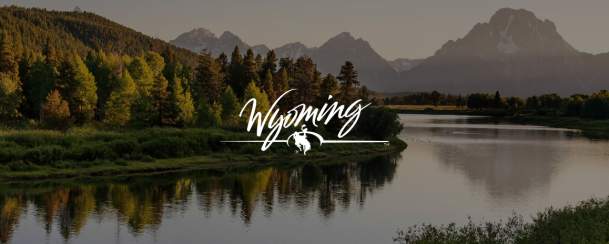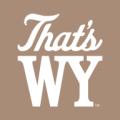During the 1800s, the pioneering spirit was alive and well. Thousands of farmers and their families made the six-month trek along the Oregon Trail, and prospectors ventured west, hoping to strike it rich.
While pioneers from this time are long gone, remnants of their abandoned frontier settlements linger throughout Wyoming, providing a rare glimpse into this bygone era.
Complete with old graveyards, original log structures and worn-out wagon trails, Old West ghost towns in Wyoming feed the imagination with actual artifacts from this transformative piece of American history.
Exploring Wyoming's Ghost Towns
These Wyoming ghost towns transport you back to the 1800s, when the West was wild and hard work was fueled by aspirations of a better life.
1. South Pass City

Nestled in a protected canyon, South Pass City is one of the best ghost towns in Wyoming. It boomed with the discovery of gold in the late 1860s and became one of the busiest cities in the region.
Approximately 2,000 miners lived in ramshackle housing around the city, hauled their gold to the assay office and spent it in the community’s then-thriving businesses. By 1872, work at the Clarissa Mine dwindled, and most miners had moved on, leaving behind the town they had created.
South Pass City Tips
What was once a deserted settlement is now a state historical site with more than 20 authentically restored structures, teeming with visitors who have come to experience its fascinating history for themselves.
You can partake in original pastimes, such as panning for gold in Willow Creek and ordering a sarsaparilla soda at the Smith-Sherlock General Store.
Howdy Neighbor
Hunting for Treasure in a Ghost Town: Gold Rush Days in South Pass City
There’s gold in these hills! Travel back in time as we explore the ghost town of South Pass City during Gold Rush Days and search for gold in the river and mines. Get a look into this once bustling mining town that has all the original buildings in their original locations, plus the festival of Gold Rush Days to celebrate all things South Pass. Our hosts explore more of Wind River Country at Sinks Canyon and search for the disappearing river.
2. Atlantic City
Near South Pass City, this booming mining town enjoyed short-lived prosperity in the late 1860s. Atlantic City had nearly 2,000 miners, many of whom were vacationers or part-time prospectors looking to score gold, so the town had many options for leisure and entertainment.
Atlantic City reportedly had a brewery, dance hall and opera house during its heyday. Many original log homes and structures remain in this popular Wyoming ghost town, including a church and general store.
Atlantic City Tips
You’ll find Atlantic City 30 miles southwest of Lander off Wyoming Highway 28. The town boasts 40 preserved original structures. Be sure to stop by the Atlantic City Mercantile, listed on the National Register of Historic Places, to grab a drink and a bite to eat.
Additionally, you can shop the general store and enjoy breakfast, lunch, dinner and cocktails at the Miner’s Grubstake & Dredge Saloon.
3. Kirwin

Situated on U.S. Forest Service land along the Wood River near Meeteetse is Kirwin, one of the most intriguing abandoned places in Wyoming. During the 1890s, Kirwin had 38 buildings and approximately 200 residents, many of whom migrated to the settlement during its gold and silver boom.
The town began deteriorating in 1907 when a massive snowstorm caused an avalanche, killing three people. In the 1930s, the land became part of the Double D Guest Ranch, visited by Amelia Earhart and her husband, George Putnam. A cabin was under construction for Earhart when she disappeared during her around-the-world flight in 1937, which was never completed.
View the remnants of her cabin, which are visible about a mile from Kirwin, as well as an old hotel, small log structures, and mining machinery at this old West ghost town.
Kirwin Tips
The Meeteetse Museums hosts an annual tour of the historic mining town in August, weather permitting. The four-hour tour departs at 9 a.m. from the museum and begins on-site at approximately 10:30 a.m. The tour is free, with donations encouraged.
There are also Kirwin off-road & ATV tours that run from May to October, featuring guided and unguided rides.
4. Grand Encampment Copper District

The discovery of copper and the development of the Ferris-Haggarty copper mine in the Sierra Madre in 1897 gave rise to several mining towns, most of which are now quintessential Wyoming ghost towns. These include Battle, atop the Continental Divide, and Dillon, established a mile from the mine.
Many buildings from the town of Battle have been relocated to nearby Encampment and placed on display at the Grand Encampment Museum, which now operates as the Battle Miner newspaper office.
For the most part, Dillon’s log cabins have fallen into disrepair, but at the ghost town site, you will see some of the deteriorating logs and can identify places where other log cabins were positioned.
Learn more about these deserted frontier settlements at the Grand Encampment Museum, which has its own recreated town formed with historic structures moved from throughout the valley. Then, drive the Battle Pass Scenic Byway to explore these historic places and admire the area’s beautiful landscapes.
Encampment Tips
The Grand Encampment Museum is open seasonally from May through October. Hours are Tuesday through Saturday, 9 a.m. to 5 p.m., Sunday, noon to 4 p.m., and it’s closed on Monday. Admission is free, with donations encouraged. Guided tours are offered on a first-come, first-served basis. The town hosts an annual woodchoppers jamboree and rodeo in June, highlighting the town’s former glory days.
5. Eadsville

The Old West ghost town of Eadsville, Wyoming, is situated in a mountain setting at an elevation of 7,800 feet. Charles W. Eads founded the city after he staked a mining claim around a large spring in 1891.
Word spread of the gold, silver, lead and copper said to be found in the area, and about a dozen cabins were built to house nearly 50 people hoping to strike it rich. Like other ghost towns, miners abandoned this area in the early 1900s once they stopped finding the precious minerals they set out to collect.
The spring where Eads first staked his claim is the center of this ghost town, which features foundations of a few cabins and a small grave. Don’t leave the area without visiting Casper Mountain, where you can find mountain biking trails of all levels and fat biking trails once the snow falls. Head into Casper for even more things to do.
Eadsville Tips
Eadsville is 12 miles due south of Casper on top of Casper Mountain. You can explore the Wyoming History Walk in Centennial Park, which is adjacent to the Fort Caspar Museum & Historic Site and shares the parking lot, which includes an Eadsville Historical Marker.
6. Point of Rocks Stage Station on the Overland Trail
Although Point of Rocks Stage Station is not technically a ghost town, the only station fully intact on the Overland Trail, built in 1862, is undoubtedly a ghost of the past and a fascinating abandoned place in Wyoming. The station is located just south of Interstate 80 at Point of Rocks. Explore the building, and then walk west on the Overland Trail. Less than a quarter mile to the West, find fenced gravesites dating back to the 19th century.
After visiting this area with an Old West ghost town feel, jump back on I-80 and continue 25 miles toward Rock Springs and Green River. These southwest Wyoming towns have plenty to offer and are the gateway to the breathtaking Flaming Gorge National Recreation Area.
Point of Rocks Stage Station Historic Site
The on-site museum is open daily from 9 a.m. to 5 p.m. from May to September, from 9 a.m. to 5 p.m. and Friday through Sunday, October to April. The historic buildings are open daily from 9 a.m. to 5 p.m. from May to September, and the grounds are open year-round, from sunrise to sunset.
7. Piedmont
A little-known ghost town in Wyoming is Piedmont, known initially as Byrne. This Union Pacific Railroad resource town was settled in 1867 and became a wood and water refueling station that boasted saloons, a mercantile, a telegraph office and several bustling businesses. Today, just a few crumbling structures remain.
What is most striking about the ruins is the charcoal kilns. These massive kilns were built in 1877 by Moses Byrne to help establish the logging industry. Piedmont and nearby Hillard were ideal charcoal-producing towns. Piedmont’s proximity to the railroad and the Uinta Mountains made it easy to produce and ship as many as 100,000 bushels each month.
Visiting Piedmont Tips
The Piedmont Kilns are located approximately ten miles from I-80 at exit 24 to Leroy Road. You can explore the charcoal kiln ruins, read four interpretive signs and enjoy two picnic tables daily from sunrise to sunset.
8. Kane

Built around what was once a pivotal railroad shipping stop, Kane was located a little south of where the Bighorn and the Shoshone rivers meet, making its ferry vital to the transportation of cattle and lumber before area highways were paved.
Though its beginnings were small and humble, the town experienced a boom due to increased tourism and westward expansion. It grew from a popular recreation spot for farmers and ranchers to a full-fledged city with a school, a bank and two hotels.
Due to the town’s waterfront proximity, the construction of the Yellowtail Dam led to Kane’s condemnation, as it was sure to be flooded when the Bighorn Lake reservoir was full. The community sold their land to the government, and the remains of this once-bustling city flooded in 1967.
Visiting Kane Tips
Today, Kane is among the quietest and serene of the old West ghost towns, as it wasn’t ever formally relocated or revitalized. There are bridge pillars and a railroad marker still visible to tourists, as well as the Kane/Iona Cemetery, still in use from the time of the town’s founding.
Officially part of the Bighorn Canyon National Recreation Area, curious travelers can find the site of Kane amid their outdoor adventures there or take a short drive to Lovell and visit the Lovell-Kane Area Museum to learn more.

